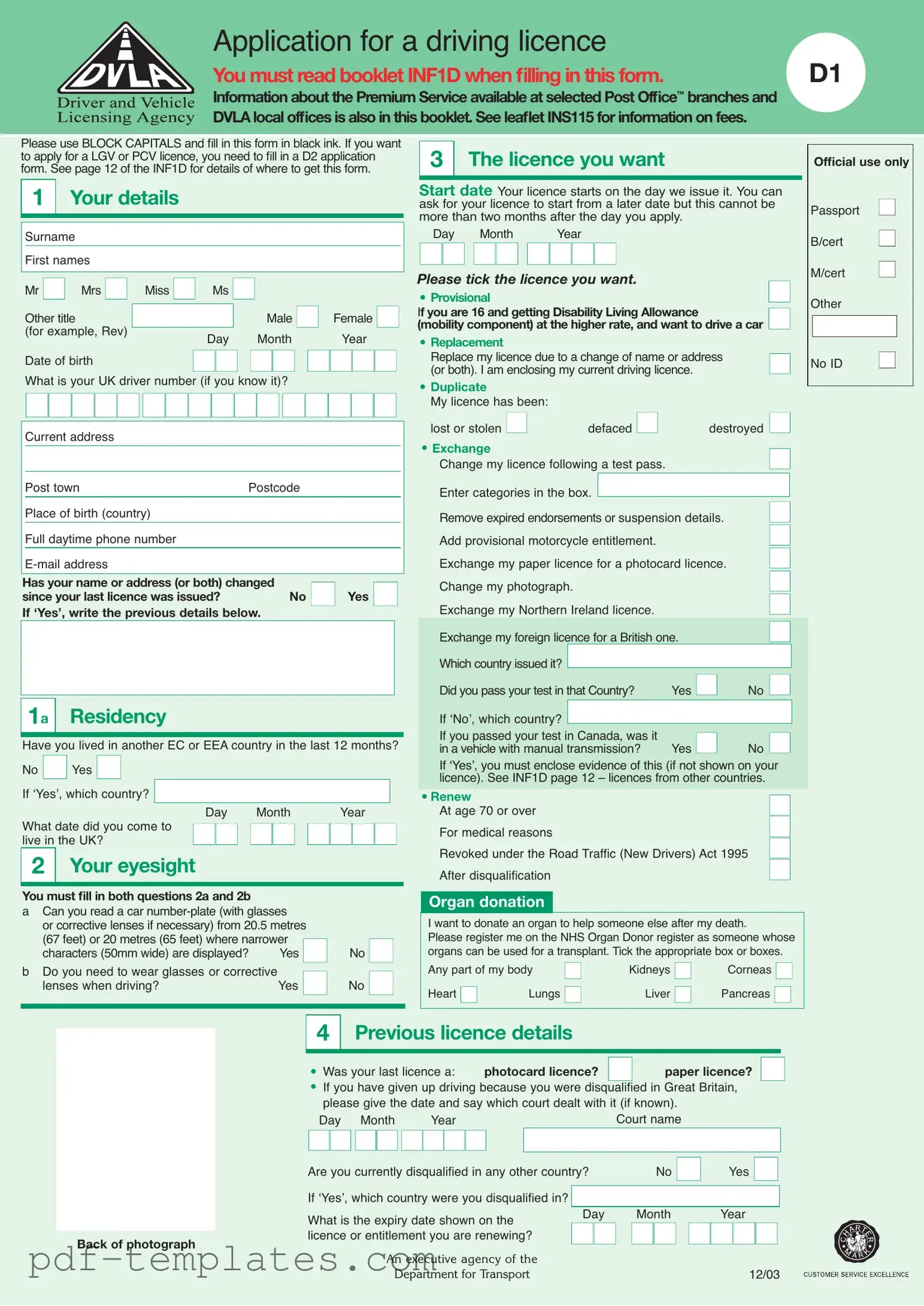The D1 DVLA form is similar to the D2 application form, which is used for applying for a Large Goods Vehicle (LGV) or Passenger Carrying Vehicle (PCV) licence. Both forms require personal details, including the applicant's name, address, and date of birth. Just like the D1 form, the D2 form also asks for information regarding the applicant's driving history and any previous licences held. This ensures that the licensing authority has a complete understanding of the applicant's qualifications and history before issuing a new licence.
When completing the application process for various vehicle-related documents in the UK, such as the D1, D2, and others, it's equally important to ensure you have all the necessary forms in hand. For those looking to establish legal authority in financial matters or appointments, a useful resource is to print the form that provides comprehensive guidance on a General Power of Attorney, which could be beneficial for related transactions.
Another document similar to the D1 DVLA form is the provisional driving licence application form. This form is specifically designed for individuals who are applying for their first provisional licence. It shares many sections with the D1 form, such as personal details, residency information, and eyesight requirements. Both forms aim to verify the applicant's identity and fitness to drive, ensuring that all necessary information is collected for processing the application.
The medical questionnaire that may accompany the D1 form is also comparable in purpose. This document gathers detailed health information from the applicant to determine if any medical conditions could impact their ability to drive safely. Like the D1 form, the medical questionnaire requires the applicant to disclose any relevant health issues, ensuring that the licensing authority can make informed decisions regarding driving fitness.
The application for a driving instructor licence shares similarities with the D1 DVLA form as well. This form requires extensive personal information, including details about the applicant’s driving history and qualifications. Both forms emphasize the importance of safety and compliance with driving regulations. The driving instructor application also includes sections that assess the applicant's fitness to teach others how to drive, paralleling the D1's focus on individual driving capability.
Lastly, the vehicle registration application form is akin to the D1 form in that it collects essential information for processing. While the D1 form is focused on the individual, the vehicle registration form requires details about the vehicle itself, including ownership and identification. Both documents aim to ensure that all necessary information is provided to maintain accurate records with the relevant authorities, whether for personal driving licences or vehicle registrations.
